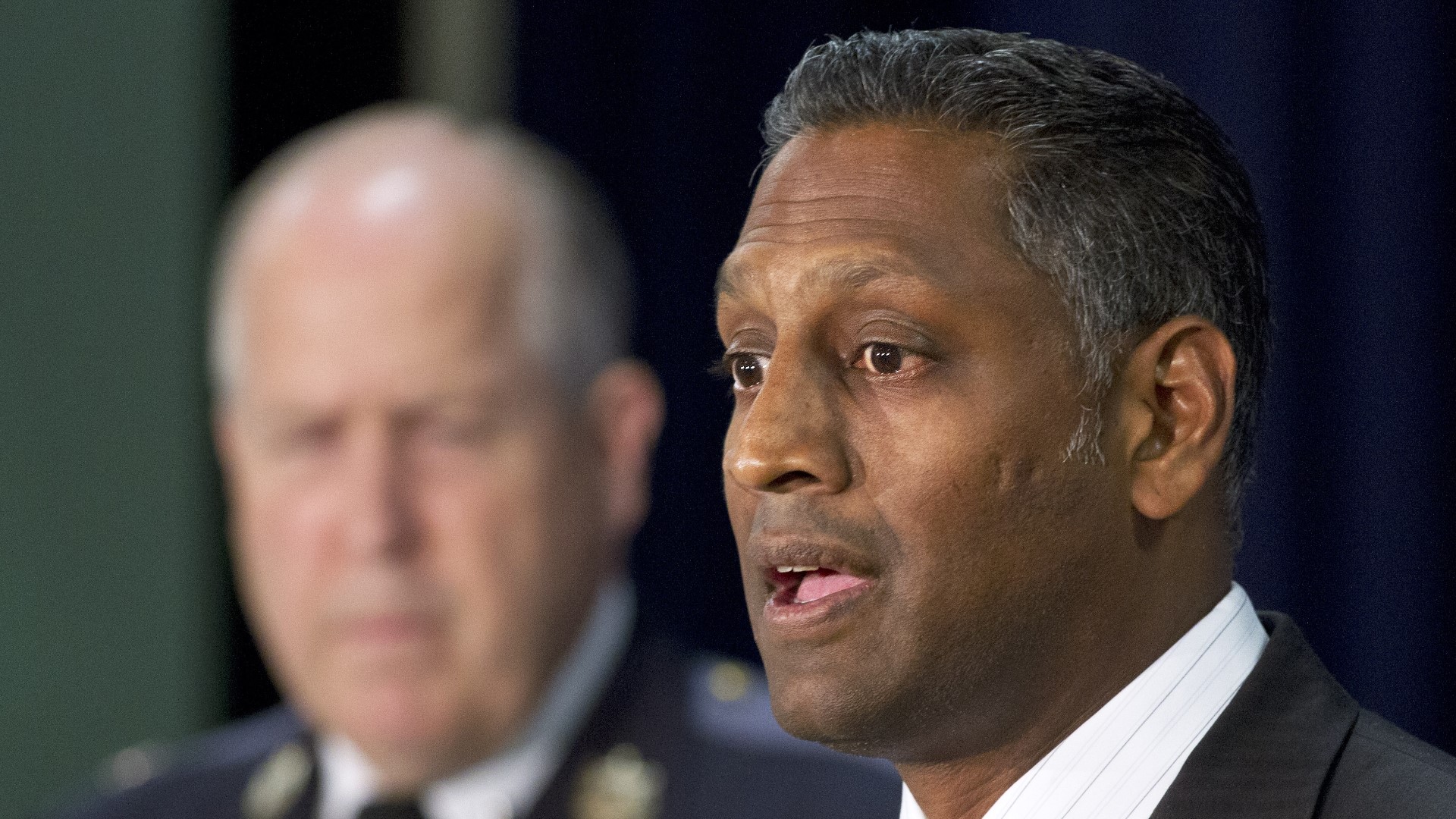WASHINGTON — The new head of the ATF in D.C. clearly remembers the first foot pursuit of his career – starting with a fist fight on Georgia Avenue, 20 years ago. It was the prelude to a high-intensity career, eventually taking him to a leading role in the District's resurgent war on guns.
“The wanted person, he took off and started fighting with me personally,” ATF Special Agent in Charge Ashan M. Benedict said in an interview Monday.
“He took a swing, I took a swing. He ran across the street into the Metro, but once you get on the radio with your team, we knew he wasn’t getting away.”
Benedict began his career with the ATF as a street agent within the District’s most violent neighborhoods, rising through the ranks to lead the agency’s New York field office by 2016.
But a homicide spike in the nation’s capital brought him back to Washington only weeks ago, as a rate once in retreat rose 40 percent in 2018, and still continues to climb.
RELATED: DC officials stiffen message after uptick in violence: Felons with guns headed to federal court
“Every shooting matters,” Benedict said. “But you now have the full resources of the ATF and the Department of Justice, the U.S. attorney’s office and MPD driving toward one goal – to make Washington D.C. one of the greatest cities in America.”
Mayor Muriel E. Bowser (D) announced a strategy three weeks ago to crack down on the bloodshed, enlisting the assistance of federal law enforcement agencies to find and prosecute the city’s main drivers of violence.
The mayor’s “felon in possession” initiative specifically focuses on felons caught committing gun crimes – prosecuting those cases with steeper sentences in federal court, instead of in D.C. Superior Court.
Washington recorded 15 homicides in the first two months of 2018. In the same time period for 2019, Metropolitan Police reported 26 homicides – a 76 percent increase.
“We see pockets of violence that are in the sixth and seventh district, some areas of the fifth district are areas of concern right now,” Benedict said, referring to areas largely in the eastern half of the city. “We’re going to keep at it until we can make those communities safe for all.”
The strategy ATF now uses to decrease violence in the District revolves around an intelligence backbone – the National Intelligence Ballistic Information Network (NIBIN) – a database exclusively operated and maintained by ATF.
The database is the nation’s largest repository of gun and ballistic data, a system Metropolitan Police can now fully access.
“NIBIN helps paint a picture for us – It tells us when guns were used in crimes, and if they were linked across the city and across other jurisdictions,” Benedict said.
“We can link shootings that much faster. It provides intelligence to detectives, investigators, agents, to pinpoint with a certain degree of accuracy, who’s responsible for the shootings throughout Washington D.C.”
As a potential scenario goes, if ATF links one gun to three shootings across the area, three prison sentences could be levied against the suspect – keeping the gunman off the street, longer.
Unique markings on shell casings added to ATF’s ballistic network can also narrow down the geography of where detectives search, with guns and cartridge cases correlated between 24 – 48 hours.
As Benedict assumes his new role in Washington, he also oversees ATF’s jurisdiction across all of Virginia. The Commonwealth is the greatest supplier of illegal guns into the District, with Georgia and the Carolinas also contributing to the problem.
“We can redirect our personnel resources and investigative efforts to combat the flow of guns from those states,” Benedict said. “And so I’ll make that a priority as well.”
The broader picture of gun crime is down – with MPD recording 2,189 incidents in 2015. The figure fell to 1,591 in 2018.
Streets Benedict patrolled 20 years ago are now unrecognizable – with an influx of families filling neighborhoods that were once left for decline and decay.
“We can still improve this city, no question,” Benedict said. “The priority is using intelligence, smart police investigative techniques, strategies to go after the small percentage of people who are willing to pull the trigger.”
“And by concentrating our efforts, very strategically and precisely, I think we can make a dent in that.”

